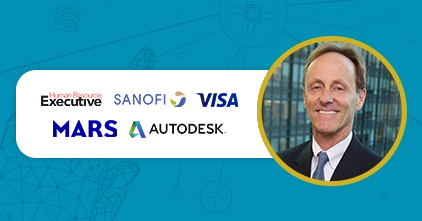Implement contextual learning to improve your training outcomes

Training can be an inspiring learning experience that truly equips your workforce to move towards your organizational goals. That is, if its application is carefully thought out and properly implemented in the workplace.
Today’s overcrowded and demanding markets are pushing organizations to invest more in learning and development. With a skyrocketing necessity for a competent workforce, nearly 90 percent of organizations surveyed by McKinsey Quarterly indicate that building on the capabilities of employees is among their top priority.
Putting theory into practice
There’s no doubt that training initiatives effectively stir a sense of belonging that inspires and motivates talent to move forward, but many programs remain too vague or theoretical to be put to the test. Contextualized learning, which connects theoretical concepts to practical real-world contexts, places training initiatives right where you need them: ready for action.
Traditionally, training sessions were scheduled; learners were presented a topic and were pushed to regurgitate facts to prove that they have mastered it. But if knowledge isn’t applied to relevant tasks soon after its acquisition, then there is a risk of your learners not developing the actual skills they need to succeed. Without this conversion from theory to practice, time is lost, resources are wasted, and lessons are not learned.
Another thing to consider is that the way people learn and digest information is much different today than it was in the past. The information or learning experience you’re pushing is competing with other distractions they face daily—their social networking, mobile devices, and many more. It’s becoming harder to retain knowledge without it being applied regularly.
Training initiatives should focus on end results or “the big picture,” rather than building broadly applicable skills. This is not to say that the latter will not be beneficial for your organization, but performance-based training, which focuses on specific outcomes, will generally bring more value for your return on investment. Not only will you see the outcomes, you will be able to more easily calculate them too.
Diversified and tailored solutions
Training providers are sprouting up like mushrooms, specializing in innumerable niches. As delivery methods through new innovations in education technology increase, and become more efficient and cost effective, precisely targeted programs have done so as well. Therefore, allowing you to truly tailor your training initiatives to make it a close-to-perfect fit for your organization.
Contextual learning can take advantage of all delivery methods, including face-to-face, VOIP or telephone lessons, eLearning, and mobile learning. Implementing contextual learning is more of a matter of leveraging different methods to construct a well-rounded, effective, and useful learning and development strategy.
Practical training best practices
- Properly conduct a training needs analysis. See why this is a prerequisite.
- Choose or design with relevance in mind. Make sure that you define a strategy that’s most appropriate to the skills or knowledge you want to impart.
- Optimize effectivity. Training activities should also teach procedures and processes on when and how to apply skills and knowledge in context.
- Make it handy. Make training available practically where and right when they need it—on demand.
- Consider movement within your organization. Ask: Is this strategy adaptable to new contexts, as opposed to just one specific context?
- Be socially conscious. It’s important to also factor in social nuances as teams everywhere are becoming more multicultural.
- Think for groups. As organizations require us to work in teams, learning should also mimic the real world application of training in a collaborative setting.
- Don’t be stingy on assessments. Evaluate your learners with authentic assessments, rather than testing on memory.
Key takeaways
Organizations have to be more mindful of the application of training initiatives in the context of their progress towards success. Equipped with diverse and cost-effective solutions available in the market, you can easily tailor your training programs to be relevant and immediately applicable to the work of your employees.



